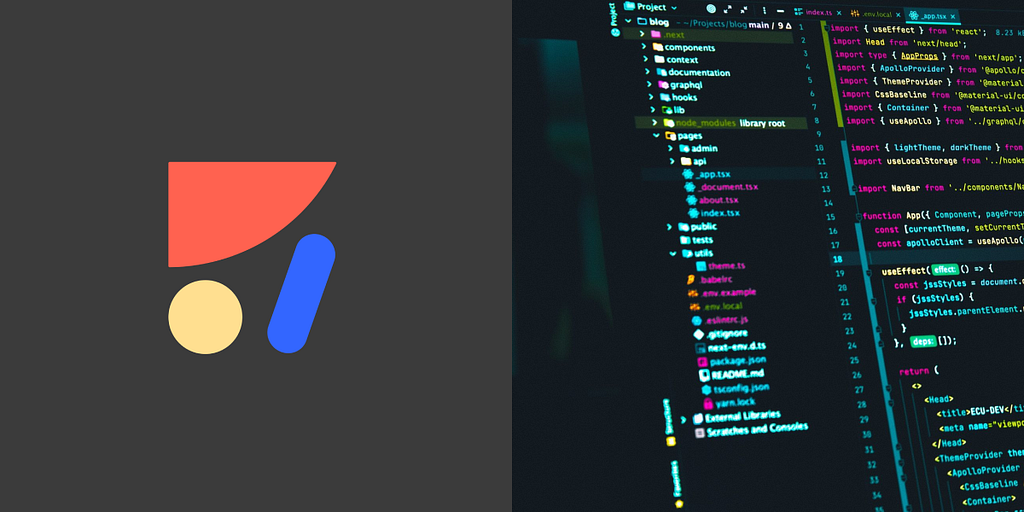
Introducing Anima Web To Code
Imagine being able to take any live website and instantly transform it into clean, editable code — ready for you to experiment with or build upon. No manual recreations and no starting from scratch. Just paste a link, and watch the site turn into a working codebase in seconds. Sounds like magic, right? But we actually have a solution for this on the market, and it’s called Anima Web To Code.
Anima bridges the gap between design inspiration and development by letting you capture an existing website and convert it into production-ready code. And in this article I want to explore how Anima’s Web To Code works, what makes it different from traditional site scrapers or copy-paste plugins, and why it’s such a powerful shortcut for designers and developers alike.
Why do you want to get a code of a particular website in the first place?
The answer is simple: it often serves as a source of reference or inspiration when working on your own project. Perhaps you come across a layout that feels just right and want to recreate something similar, or you discover a color palette that you’d like to experiment with on your site. In the past, this meant spending hours manually inspecting the source code, digging through styles and elements just to understand how things were built. And if you didn’t have strong front-end coding skills, it was easy to miss important details along the way.
What makes Anima Web To Code stand apart
With Anima Web To Code, all it takes is pasting the URL of a webpage you like, and the tool instantly delivers clean, runnable code. This isn’t just a static HTML snapshot; it’s a project-ready foundation that you can immediately build on. Even better, you can define the technical stack (React, TypeScript, Tailwind, etc.) from the very beginning, ensuring the output aligns with your workflow.
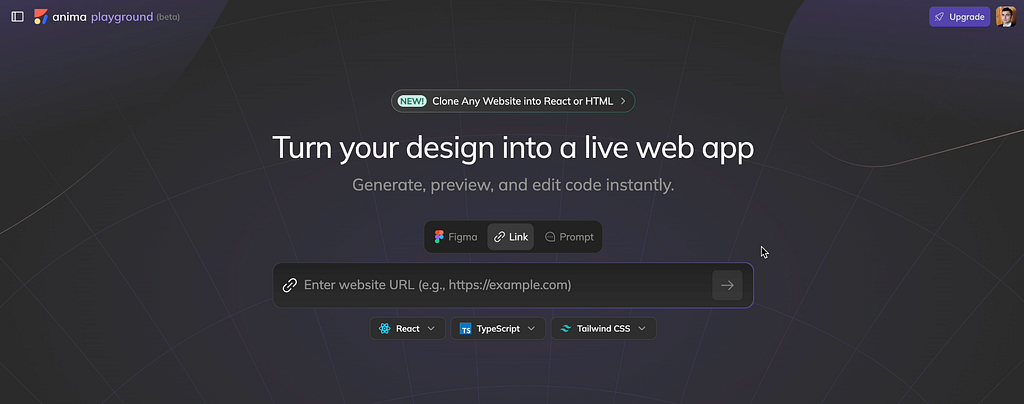
Another thing that makes Anima so powerful is the approach the tool uses — the code it generates is available in interactive playgrounds. Instead of downloading code of the page, you work in a live environment where the generated code can be refined and reworked in real time. Anima’s built-in AI assistant makes this even more powerful: thanks to its strong context awareness, you can guide changes with simple, natural prompts — no need for overly detailed instructions.
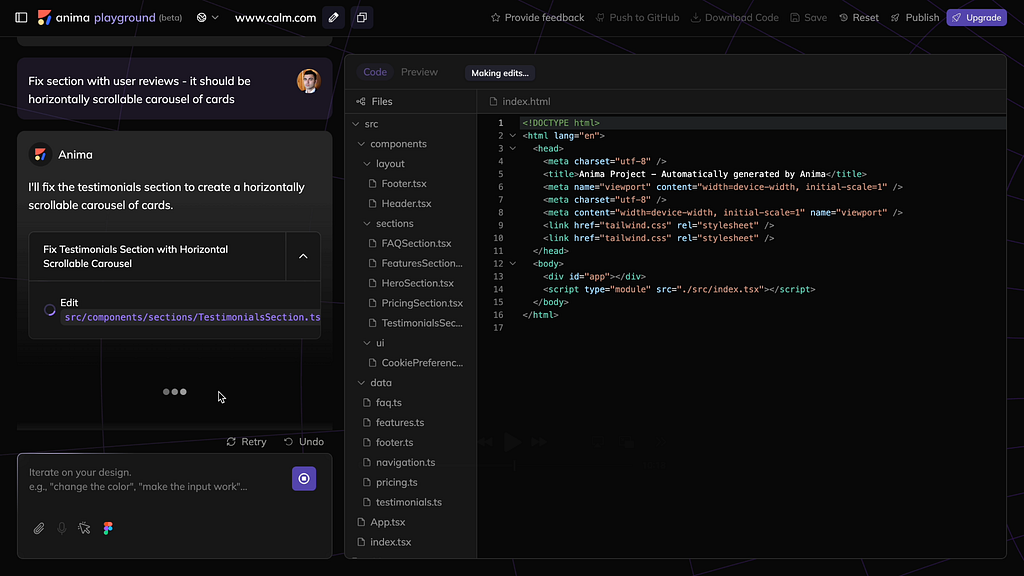
Finally, Anima keeps you in what I call “flow mode.” Instead of wasting energy on setup or tooling, you stay focused on problem-solving and design iteration. This shift has a huge impact: you not only move faster but also produce higher-quality results because your attention remains on the creative and functional aspects of your work.
Capturing a snapshot of a real page and refining it: 5-step process
Step 1: Provide source page
Anima offers two ways of capturing a snapshot of a real page — either by accessing a web service and providing URL of a page or via a Chrome extension. Both ways will lead to the same result, but using a Chrome extension is more convenient as you don’t have to navigate to a dedicated page where you enter the URL manually.
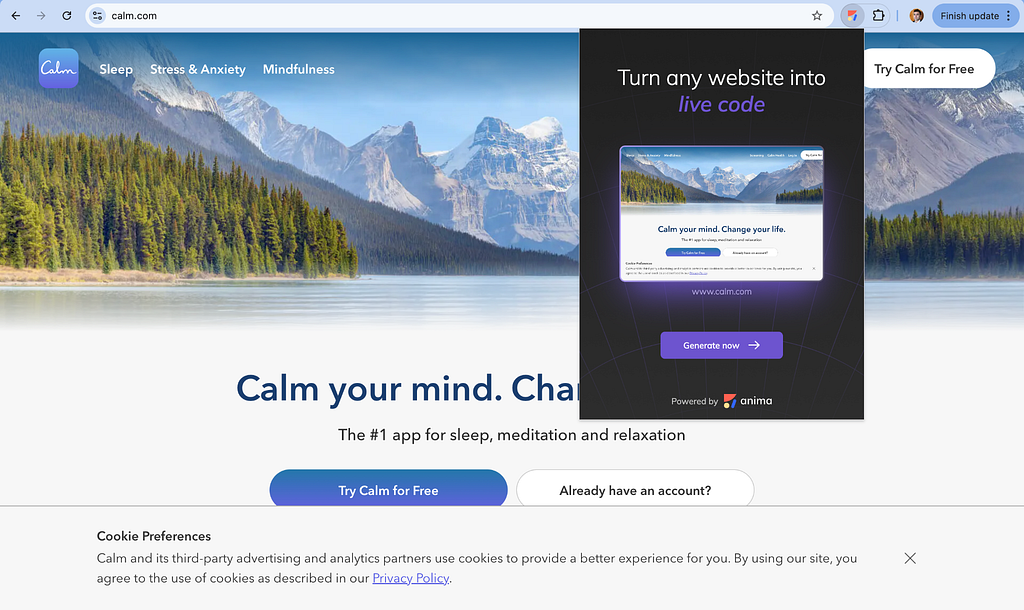
Step 2: Let Anima generate the snapshot
Once you provide a URL to Anima, it starts generating a snapshot of the page. For my example, I will generate a snapshot of Calm, a popular meditation app for mobile devices. It’s very important to mention that I’m creating a snapshot of the page for purely educational purposes and I’m not inviting you to copy the style of existing websites.
The entire process of page generation, since the moment you submit the URL, takes a couple of minutes.
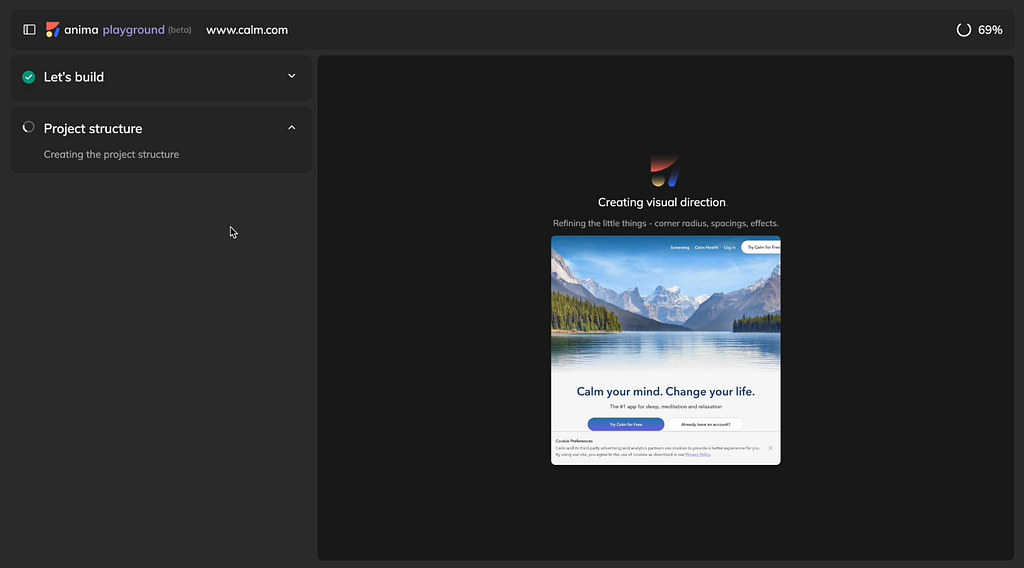
And the end result will look very close to the original design of a web page — visuals, colors, fonts, and other visual attributes of the generated page match the original design.
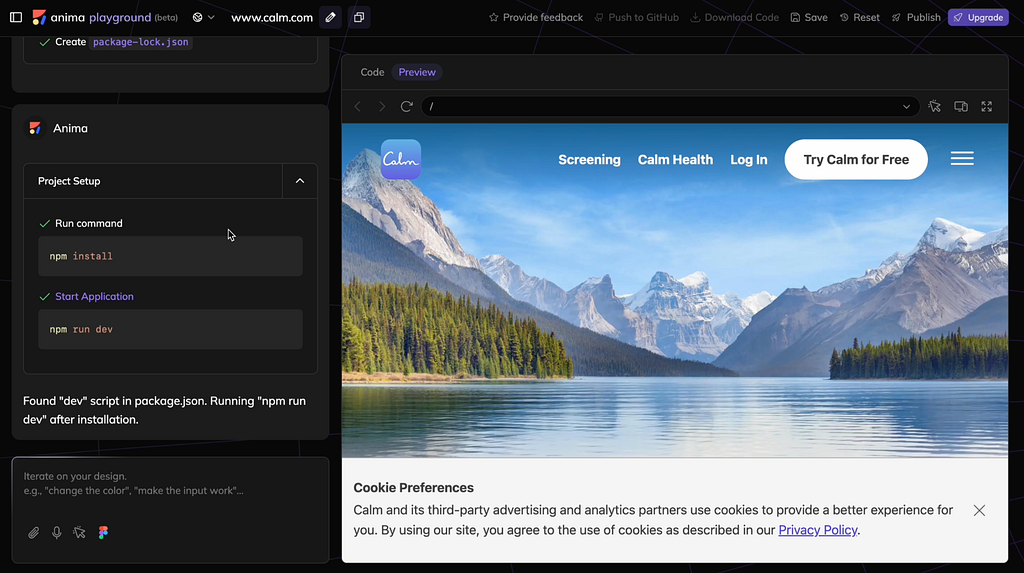
Step 3: Inspect the result
During this step you review the output generated by AI and customize it or fix issues. The great thing is that the solution that Anima generates is fully editable. You can easily tweak it according to your needs. For example, you can see that there is an issue with the testimonials cards — they are stacked vertically one on top of another without any spacing between them. And if you want to change this, you can ask Anima to do that for you.
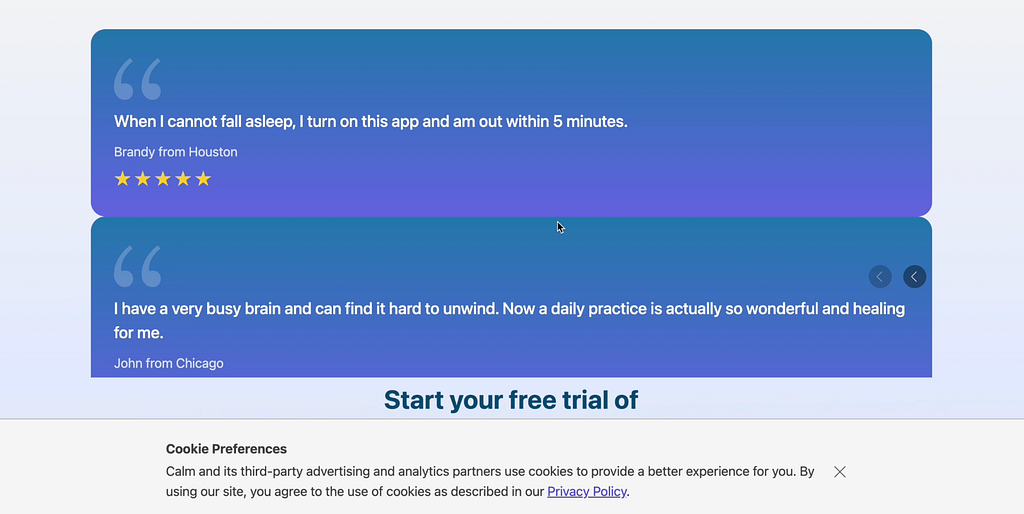
The prompt I will use is as follows: Fix section with user reviews — it should be a horizontally scrollable carousel. The great thing is that you don’t need to provide any additional details to Anima, as the tool will figure out what you mean by analyzing the page.
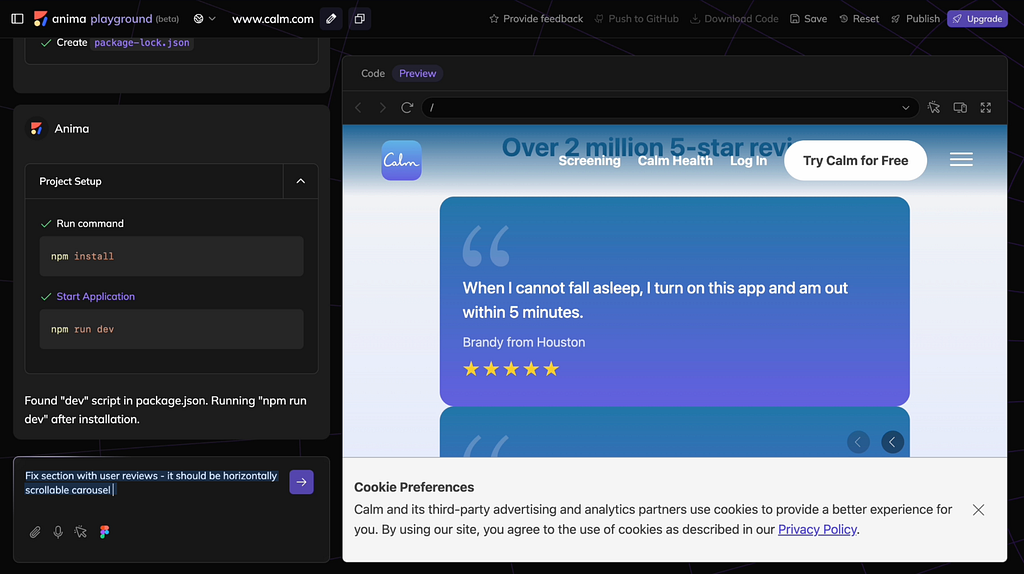
After the quick iteration (which takes around a minute), Anima will generate a second version of this page with a refined testimonials section. And the tool even provides details about the functional behavior of the section.
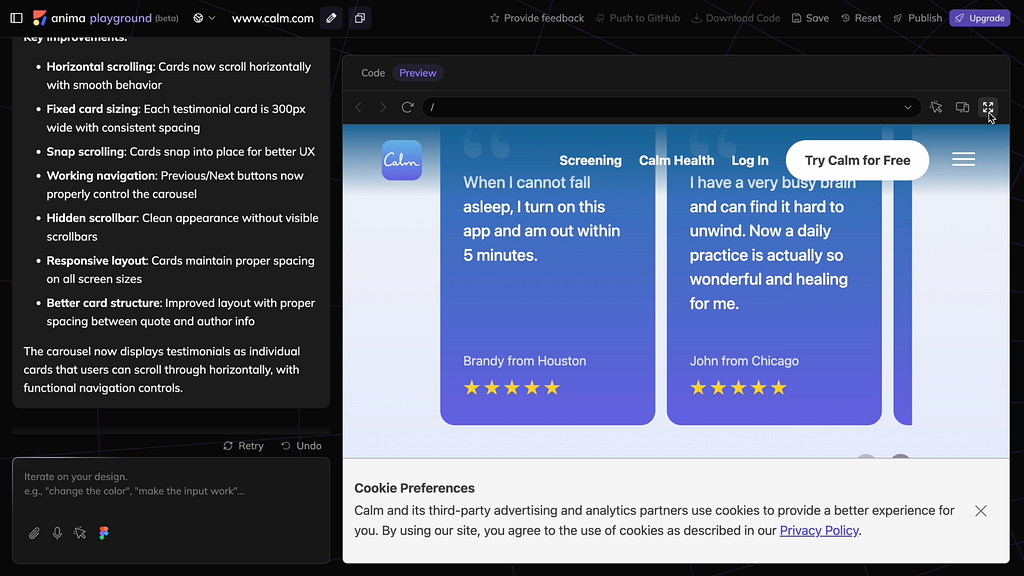
Step 4: Refine with the AI assistant
Another area where Anima demonstrates a solid performance is the optimization of web design for mobile. I believe that web pages should be optimized for mobile consumption from day one; however, many times we treat mobile optimization as an afterthought, which results in poor UX and lost conversions.
When it comes to our example, we do have an issue with the mobile version of the page (which we can easily view in Anima simply by switching the viewport). The above-the-fold area doesn’t have any text that describes the service. In other words, people who access this page from mobile will have a hard time figuring out what this page is all about. But we can easily fix it by prompting AI: “Make design mobile-friendly — the slogan and call to action button should be visible without scrolling.”
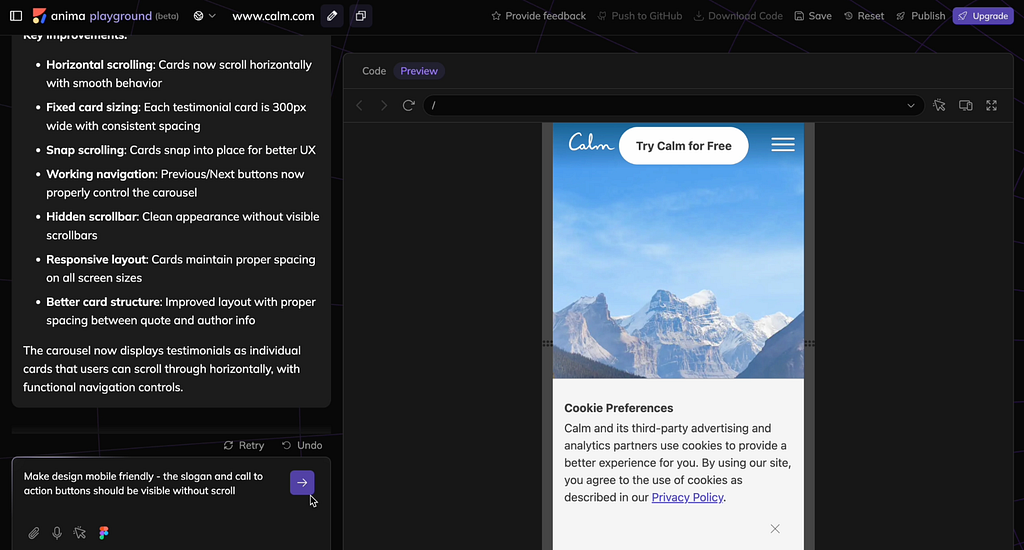
After a quick iteration, Anima will generate a second version of our design, and this time, the mobile view will have a slogan paired with a call-to-action button.
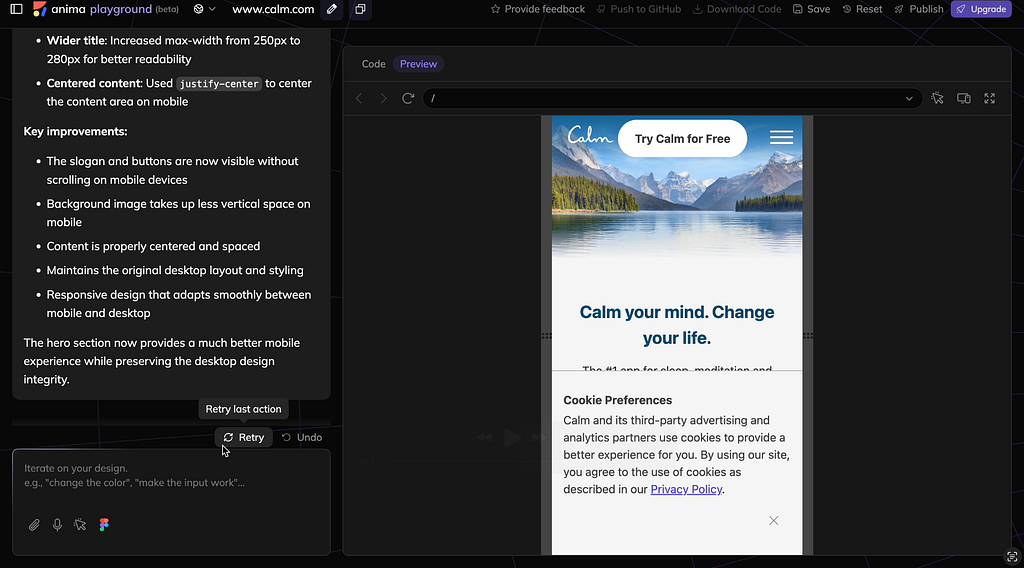
I’ve shown a couple of examples of how we can refine the current design, but what if we want to see what this page will look like in a different visual style? Let’s do a radical change of the look and feel of the page and ask Anima to recolor it to green and use forest as an example. The prompt I’m using this time is this: Change the visual theme of the page to green with a lot of flowers instead of forest.
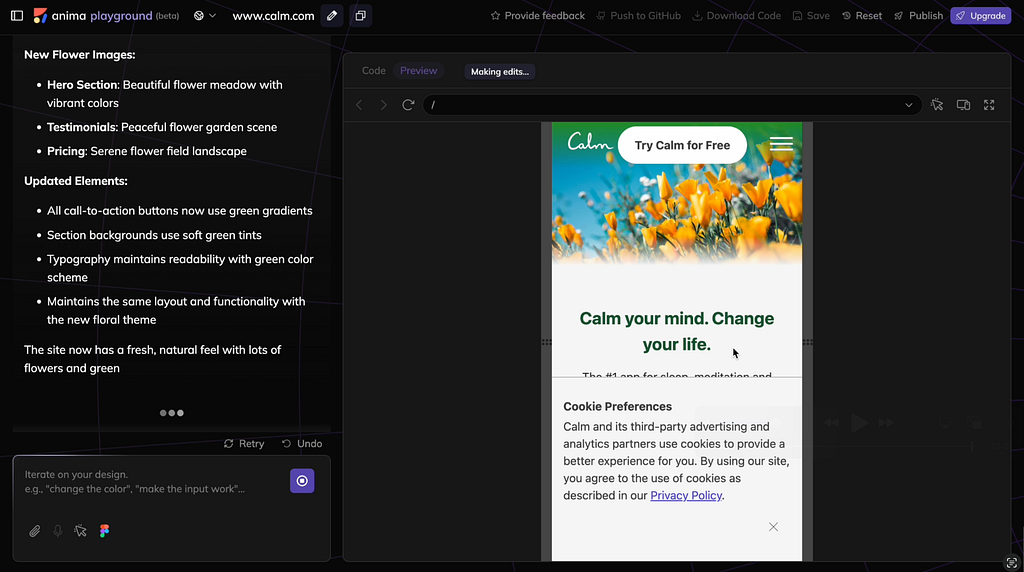
And as you can see, Anima did exactly what we’ve asked — a new visual style was applied on top of the existing layout structure, so the page still looks familiar to us.
Step 5: Add content or functionality
Lastly, I want to show you how you can create a new section on the page. For my example, I will add a “Daily Reset” section that gives readers a single piece of content each day to make it easier to start (rather than scrolling through categories). I will provide a prompt with the following details: a visually distinct card at the middle of the home page, called “Daily reset” that provides readers with a single piece of content each day, making it easier to start (rather than scrolling through categories). The section has calming imagery, encouraging users to “press play and reset.
Anima bakes this section in the original design — the new section is designed with a similar styling (font, color, spacing) but with a subtle difference so it remains distinct. And the magical moment for me is that AI generates the content for this section. I’ve provided just a general context and AI did the rest — created a fully functional and user-friendly section that naturally aligns with the page design.
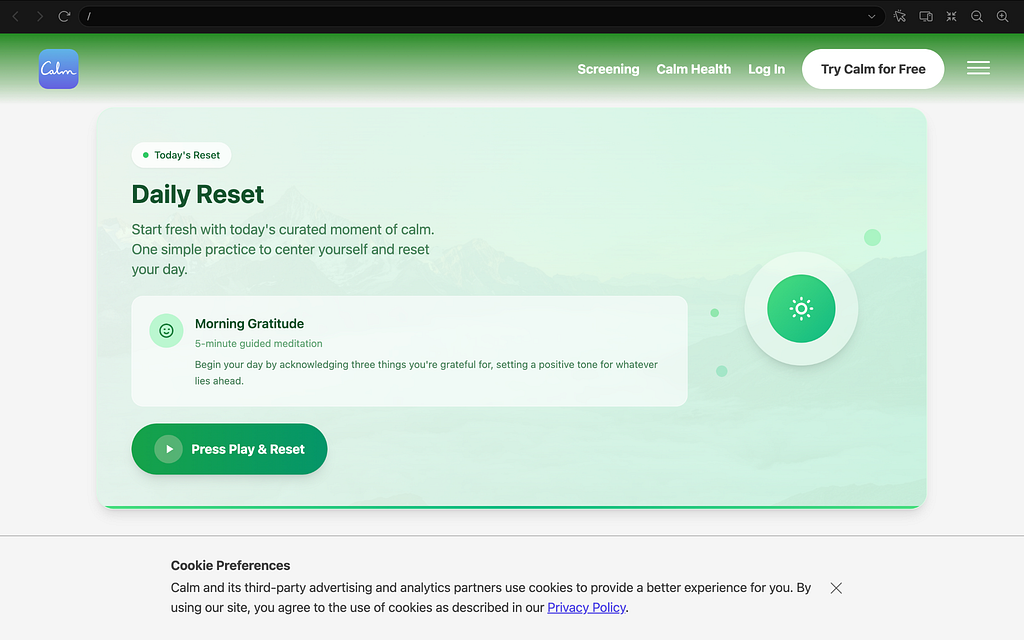
Once you create a solution that you like, you can move to the next step and download a source code or publish it online so other people can see it.
In conclusion: Anima’s benefits for different users
Anima Web To Code is more than just a shortcut for fast prototyping or front end development; it’s a versatile tool that empowers everyone on the product team:
- Designers can move beyond static mockups by working with real, editable code. This means design ideas can be tested in an interactive, functional environment from the very beginning.
- Developers save hours of manual work by instantly generating scaffolds from reference sites. Instead of rebuilding layouts from scratch, they can focus on refining structure, improving performance, and integrating logic.
- Product owners gain the ability to run quick experiments. With AI assistance, they can request components or design changes using simple, high-level prompts, and they don’t have to dive into code; this dramatically accelerates decision-making and iteration cycles.
Ultimately, Anima brings everyone into a shared workflow where inspiration turns into implementation faster, reducing friction between design, development, and product vision.
An easy way to turn any live website into editable code was originally published in UX Planet on Medium, where people are continuing the conversation by highlighting and responding to this story.